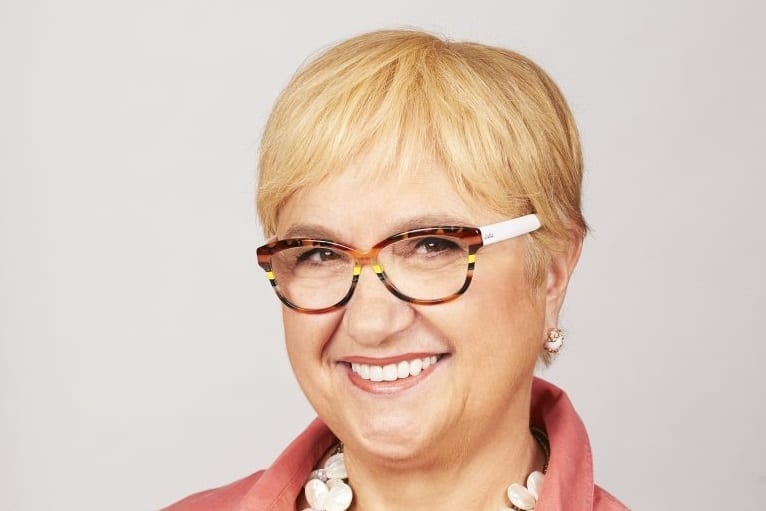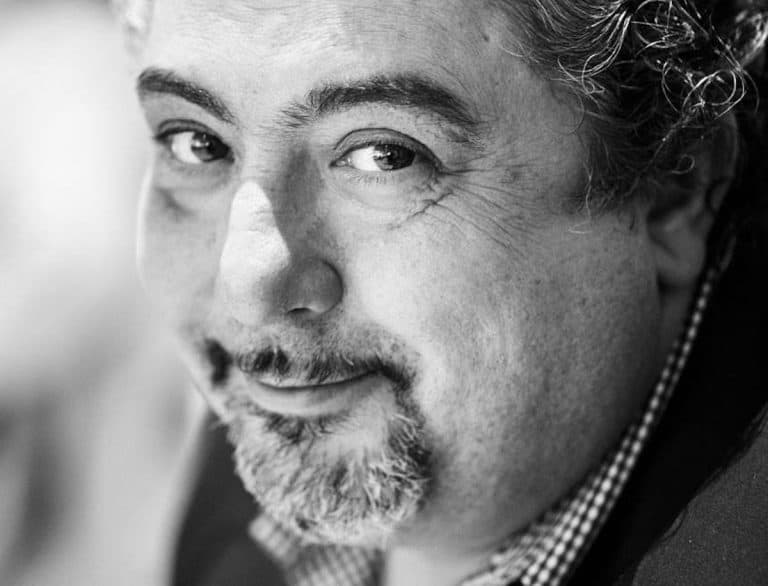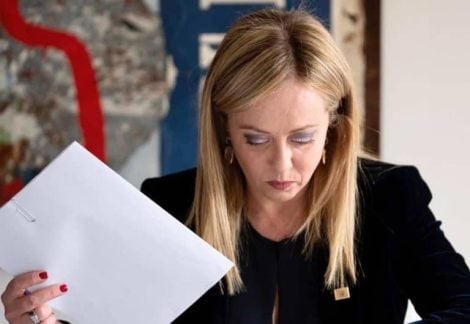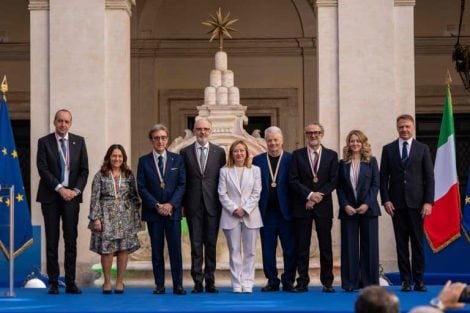“In one way or another, cooking has always been a big part of my life: growing the seedlings, gathering them, starving, having plenty of food, selling it at the local market, preparing it, eating it, sharing it and appreciating it. ” A force of nature, Lidia Matticchio, born in Pula in 1947 when the city, now in Croatia, was still Italian. She fled to Trieste and then to the United States in 1958. Here her name and life are linked to that of another Istrian, Felice Bastianich.
The new book by Lidia Bastianich
The story that Lidia Bastianich tells in her latest book Il mio sogno americano released for the Solferino guys, begins earlier, much earlier. Even before she was born – following the trail of a war that bloodied Italy and Europe – and before Lydia was Lydia (for the first years of her family life she was called Giuliana). It is a story of affection and destitution, like many of the first half of the 20th century. About poor tables, but, full of flavor. A story that mixes Pula with Busoler, a place where the grandparents lived, among gardens, farm animals, fruit trees. " My grandmother’s face told the story of a life spent in the open air, working in the garden, caring for the animals, cooking, washing and taking care of the family”, says the chapter dedicated to Mrs. Rosa, and enough to suggest a difficult but full horizon.
Lidia Bastianich's book
The first chapters about this part of her life, Lidia, devotes time, space and memories: many pages to caressing a paradise lost one night when three men in uniform picked up her father, accused of being a capitalist. The jail term lasted a month. The book follows the tormented events in Istria, the advent of Tito and the subsequent escape of the Matticchio family. First in Trieste (with the smell of coffee in the streets) in an Italy "Country of first reception" or rather in which "immigrants were welcomed but not necessarily integrated", then farther away, across the Atlantic. Not without a long passage as a stateless person, in a refugee camp. Would Lidia's successful American story be equally understandable without knowing these dramatic passages of her life? Without the weight of a very difficult childhood, of an early adolescence “in search of my spirituality” that could sustain her in a situation of great uncertainty. Before Italy was hit by the economic boom, the entire Matticchio family flew to the United States, to pursue the American dream, or simply to escape hunger, a “journey to freedom and a new life”, without having relatives or friends, without knowing the language, without money, without a job. But with the prospect of discovering a new world and the possibility of building a future.
Lidia Bastianich. Italian-American cuisine
She landed in New York, moved to New Jersey, then went to Astoria, began her new American life. A small job allowed her to buy pre-cooked and frozen food: “I’m American”, she exclaimed after eating it. Then with the restaurants she earns a few buckets. And she’s doing his apprenticeship. She knows Italian-American cuisine, understands its origins and reasons: the lack of olive oil, ham, the great availability of meat, and garlic – one of the few products similar to those in Italy – as a trait d’union with hers native land. After some time she married Felice Bastianich. Buonavia opens with him: the first restaurant, in Queens, then followed by Villa Secondo "In life you have to take risks.” Simple premises where she brought to the table the flavors of her childhood. The family in the meantime has expanded, with the birth of Joe LINK and Tanya. " At the age of thirty-two, with two small children and two successful restaurants started, I ventured into what would prove to be the most frightening and risky project of my life: the construction of Felidia. ” She faces difficulties of all kinds, she risks failing, but finally on April 16, 1981 Felidia opens to the public. And it’s with Felidia that she won a place in the hearts of Americans. From there it’s known history.
Lidia Bastianich and the landing on tv
When Julia (the one, Julia: Julia Child, to whom a serious TV is now dedicated) goes to dinner with her, she is charmed by her cuisine and even more by her humanity, that ability to get in touch with the other. So she pushed her towards television and convinces her to make Italian cuisine known to Americans, to transmit its taste, memory and love, to become its emblem and symbol. Lidia is the Italian cuisine in America. In her are all the Italian mothers, real or imaginary. There is nostalgia, enthusiasm, strength. But, probably, her heritage would not have been as successful as it hadn’t been crossed with a great entrepreneurial capacity: “From Italy I got the love for food, from America the ability to do business. ” Untied, optimistic, energetic. Lidia has entered American homes, through television and her many books. And she continues with this passionate autobiography.
by Antonella De Santis


 Farewell cacio e pepe in New York. "With tariffs, Pecorino Romano will also become more expensive." The warning from Giuseppe Di Martino
Farewell cacio e pepe in New York. "With tariffs, Pecorino Romano will also become more expensive." The warning from Giuseppe Di Martino Against tariffs? Here are the US foods that could be "hit"
Against tariffs? Here are the US foods that could be "hit" US tariffs: here are the Italian wines most at risk, from Pinot Grigio to Chianti Classico
US tariffs: here are the Italian wines most at risk, from Pinot Grigio to Chianti Classico "With U.S. tariffs, buffalo mozzarella will cost almost double. We're ruined." The outburst of an Italian chef in Miami
"With U.S. tariffs, buffalo mozzarella will cost almost double. We're ruined." The outburst of an Italian chef in Miami "With US tariffs, extremely high risk for Italian wine: strike deals with buyers immediately to absorb extra costs." UIV’s proposal
"With US tariffs, extremely high risk for Italian wine: strike deals with buyers immediately to absorb extra costs." UIV’s proposal






